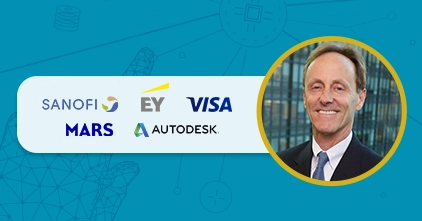In times like these, it’s important to ask — is your organization capable to train its employees remotely? Here, we’ll guide you through transitioning from F2F to digital learning for your organization to make a successful “switch.”

We’re never certain of what might happen to everything around us. Looking at a real-life scenario, UNESCO has recommended the use of distance learning as a way to mitigate the disruption of education due to the COVID-19 (coronavirus disease 2019) pandemic. This forces organizations to let their employees work from home or remotely and for schools to conduct online classes instead. As a result, people are now realizing the need for online learning and blended learning capabilities. In fact, 57% of companies are now spending more on digital learning compared to traditional instructor-led training (ILT).
So in times like this, ask yourself — is my organization capable to continue operating while still providing learning opportunities for its employees? If you can’t hear a resounding yes, it’s high time for your company to make the great shift — from the traditional face-to-face (F2F) classroom set-up to online learning modalities.
Here are 5 steps to make an effective F2F to digital learning switch:
Conduct training needs analysis
Before transitioning to digital learning, it’s best for your organization to conduct a training needs analysis first. Basically, it involves determining gaps between corporate training and its corresponding training needs. Here are the steps to achieve a successful training needs analysis:
Identify the skills gaps
Digital technologies have a great impact on the global economy, demanding employees to have highly specialized skills sets. Using digital learning addresses these skills gaps. But with the various modalities in online learning, you can get easily caught up with these different learning techniques. So it’s a great start to first identify the occurring and emerging skills gaps in your organization. To do this, here are easy and actionable steps you can take:
- Establish desired outcomes – You can do this by talking to managers and department heads to set expectations. Looking through benchmarks, company manuals, and evaluations of high performers can give you an idea of what the standards are.
- Know the current situation – Observe your learners in action. You can also discuss with managers and look into performance reports to see the current skill levels and capabilities of your employees.
- Determine the cause of the gap and the solution – After assessing the set goals and the current situation, you can get feedback and suggestions from your learners and other stakeholders. Know the current skills and knowledge, determine the capacity of the organization, and identify the tools and equipment available for learning.

Set clear training goals
Next, you should determine and set clear training goals and objectives that your digital learning program should address. For example, you can aim for 10% more ROI, increased learner engagement, and such metrics.
Select the appropriate digital learning modalities
This will heavily depend on your training needs and business climate. Now, since global organizations prioritize distance learning wherein they can learn while using mobile devices, you may opt to choose scheduled one-on-one virtual training for your employees and eLearning content that learners can consume on-the-go.
Conduct a cost benefit analysis
Determine the cost of the online learning program and how this compares if you do the training in-house. Here, you can also set a return on investment (ROI) that the training program should meet at the end of the implementation.
Install a method of evaluation
One way to assess your current L&D program before switching to digital learning is to get some feedback from your learners. You should know how the digital learning program has improved the skill levels of your learners while also looking into how you can further improve the training.

Make corporate training more relevant through content curation
Content is indeed king. Your learning content should always be updated, reliable, and most importantly, relevant if you want the digital learning experience to be effective and engaging to your learners. Compared to F2F, switching to digital learning helps you curate your content easier as more and more companies are now using eLearning, LMS, and LXP in delivering on-demand learning within their organizations.
In fact, 42% of L&D professionals believe that continuous learning is the top benefit of content curation. Here are some of the most common examples of content you can curate and their benefits for your digital learning program:
- Industry news and developments. It’s important for you learners to stay updated with the latest news and issues especially with your organization’s industry. With the help of a learning solutions provider, you can pick the most relevant materials your employees can skim through, such as recent headlines to get an idea of what’s currently happening in their industry.
- Best practices and tips. This is a helpful way to educate your employees in real-time. Best practices and tips are short and easily digestible content that your learners can consume and learn in the flow of work.
- Specific trends or research data. Reading through data, statistics, and trends can sometimes be taxing. Curated content helps your learners see data in a more engaging manner as it emphasizes the major findings and points of surveys.
- Specific learning courses or programs. You can also recommend more online courses and programs that can act as supplemental materials for your employees’ workplace learning.
To make the switch easier and more seamless for your organization, you can partner with a corporate training solutions provider that can aid you in carefully and more effectively curating your content to provide more value and relevance to your learners. The key here is context; having a more contextual learning can be achieved through providing online learning to your employees which they can easily access.
For example, when you implement a language learning program in your company, it’s best to partner with a language solutions provider that caters to the immediate goals and needs of your workforce by providing them with necessary training paths. This should be tailored to your learners’ everyday job functions and should address their workplace concerns. For a better and more relevant learning experience, business communication vocabularies and jargons for different industries should be curated as well.
Don’t forget the ‘human side’ of learning
It’s great to note that one of the greatest benefits of online learning is that you can quickly deliver courses, lessons, and training to your employees whenever convenient for them and wherever they may be. More importantly, digital learning reduces the required learning time to approximately 25% to 60% of what’s required in traditional F2F learning.
One of the three components of a strategic corporate training is human interaction. So, as you migrate to digital learning spaces, you should remember to incorporate a human touch to it. Ensure that human interaction is still the core of learning by providing a live learner-trainer interaction through:
- Video conferencing
- One-on-one lessons (through video or phone call)
- Interactions between your learners and certified learning consultants
- Personalized reporting and writing
As an example, when it comes to learning the language of business, it’s important that corrections related to pronunciation, vocabulary, and word use are being communicated to your learners in real-time for them to know what aspects to improve on. This is critical for business professionals when they’re about to manage meetings, interact with business clients, and socialize with foreign colleagues.

Think like a marketer
LinkedIn put it best when they said that L&D leaders, HR professionals, and training managers should always think like a marketer. You’re tasked to borrow concepts and practices from marketing in order to effectively endorse your online learning program to your executives, learners, and other stakeholders.
One way to do this is to strengthen your organization’s internal communications. Some marketing methods and strategies you can apply are:
- Email marketing. LinkedIn reported that 61% of employees discover their learning programs through email marketing. So it’s one strategy you can use to drive engagement and highlight the value of workplace learning to you stakeholders. For example, for salespeople learning new languages, maybe you can send them out courses and training paths on business communication and how to close deals.
- Running competitions. Gamifying learning is another effective way to convince your learners to take corporate training lessons. For example, you can reward the top scorers and the person who took the most amount of lessons within a month among your employees. This then gives them incentives to more than what’s required when it comes to workplace learning.
- Social learning. Creating forums where your learners can interact can encourage your learners to share knowledge with one another. This is also a great way for you to foster collaboration in your organization through social learning. For example, you can create threads and link learners there to get their insights about certain topics.
- Learner testimonials. Gather feedback and testimonials from your learner and include them in your internal communication emails within your intranet to advertise your online courses to your employees. In fact, peer-recommended courses are most likely to be taken by learners.
Evaluate the results and impact of your digital learning program
Training evaluation and assessment is a requisite to any L&D program your organization has; it’s not unique for digital learning. The rationale behind this is that evaluation can help you determine whether or not your online learning program has met your organization’s learning objectives.

In the case of a language learning program, some of the metrics you can look into are learner satisfaction, engagement, productivity, increased language proficiency, workplace performance, and such. You can also ask yourself the goals of the digital language learning program — do you want your employees to be able to effectively lead a business meeting? Should your employees be able to speak basic Mandarin? Do your employees want to have more confidence in conversing with foreign business partners? And in the end, were you able to meet these goals?
Here are 6 online metrics you should look into:
- Learner engagement. This helps you determine if the delivery of your eLearning program is effective. You can measure this through looking at the number of hours your learners are logged into the system and the course completion rates. Then, you can compare it with the desired outcomes you’ve set.
- Learner satisfaction. Gather satisfaction surveys among your employees through getting their feedback regarding the methods of training used, their trainers/instructors, the eLearning content, and the relevance of courses to their job roles.
- Skills attainment. It’s best to know the rate of progress of your learners and their passing/failing rates as well. You can do this through standardized tests and assessment tools.
- Workplace application. Are the online courses relevant to your employees’ daily tasks in the workplace? You should gather evaluations done by managers to see whether or not there’s a positive change of behavior and capabilities among learners after the training duration.
- Performance. You should look at individual and team performance evaluations and compare this to the expectations set at the start of the training program. This helps you whether or not the training meets your organization’s business objectives.
- Return on investment (ROI). Measuring the ROI can help you know whether or not the training program is cost-efficient. You can measure the percentage of ROI through dividing the net program benefits by the program costs then by multiplying it by 1000.

Conclusion
Trying times call for ensuring the safety of your employees. But this doesn’t mean that their learning and progress should be compromised in the process. This makes the switch from F2F to digital learning more relevant than ever to address the issue. Keep the enumerated steps in mind to ensure the success of your digital learning initiatives.




